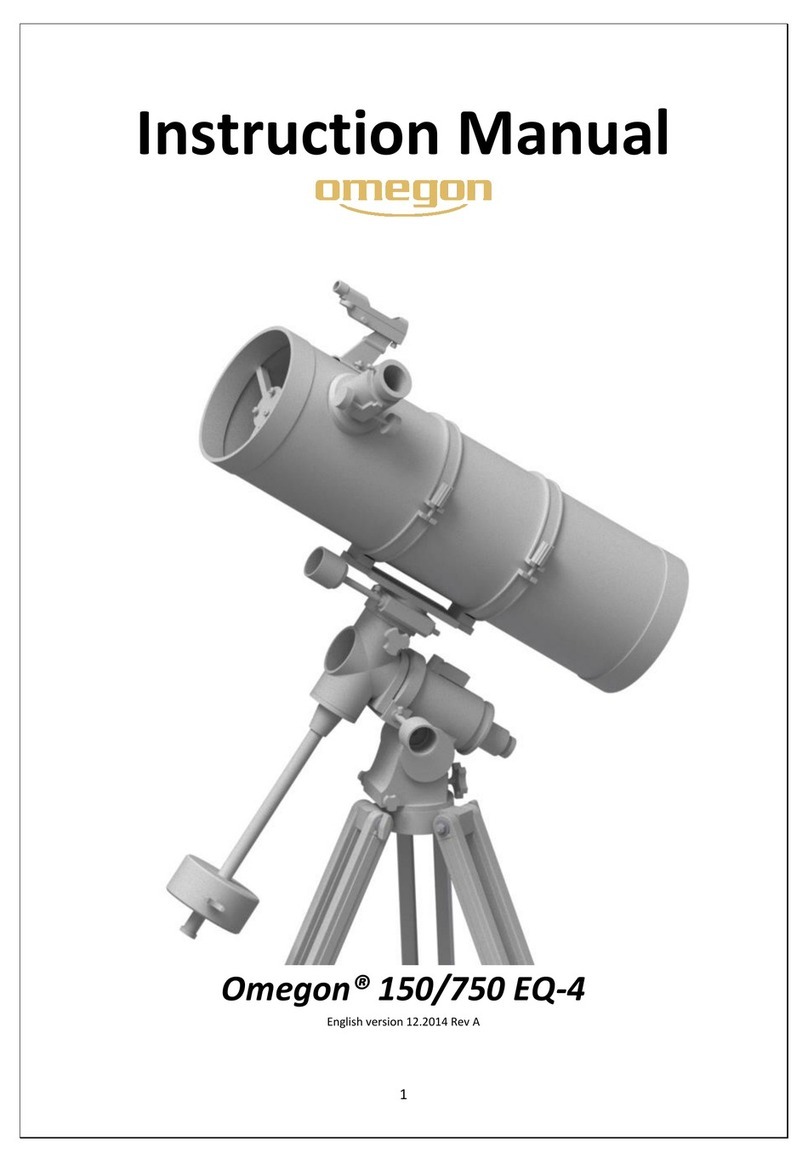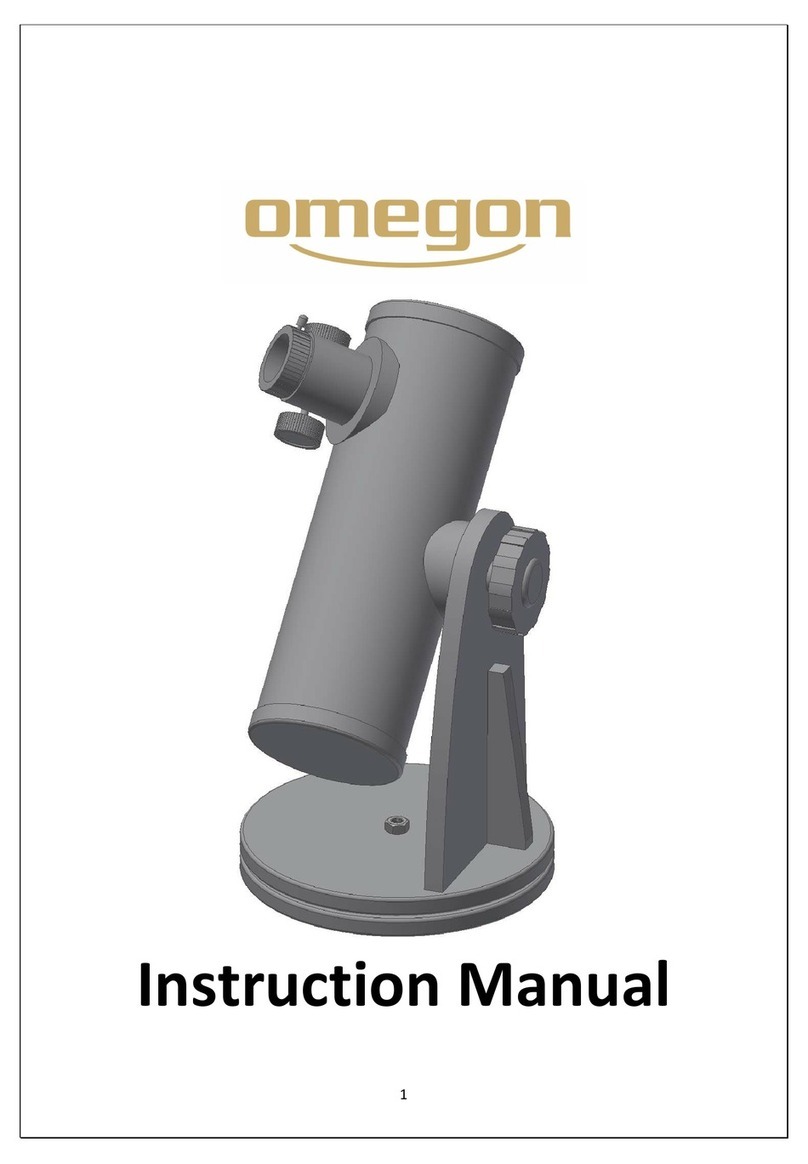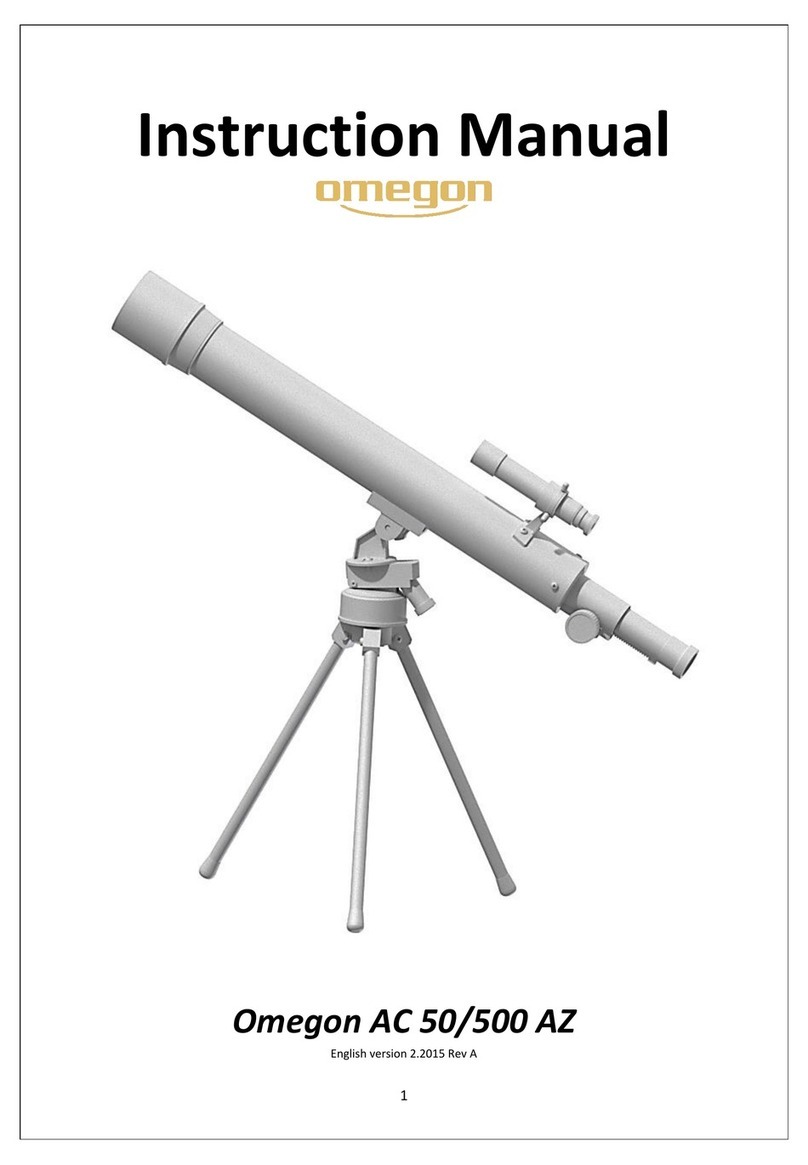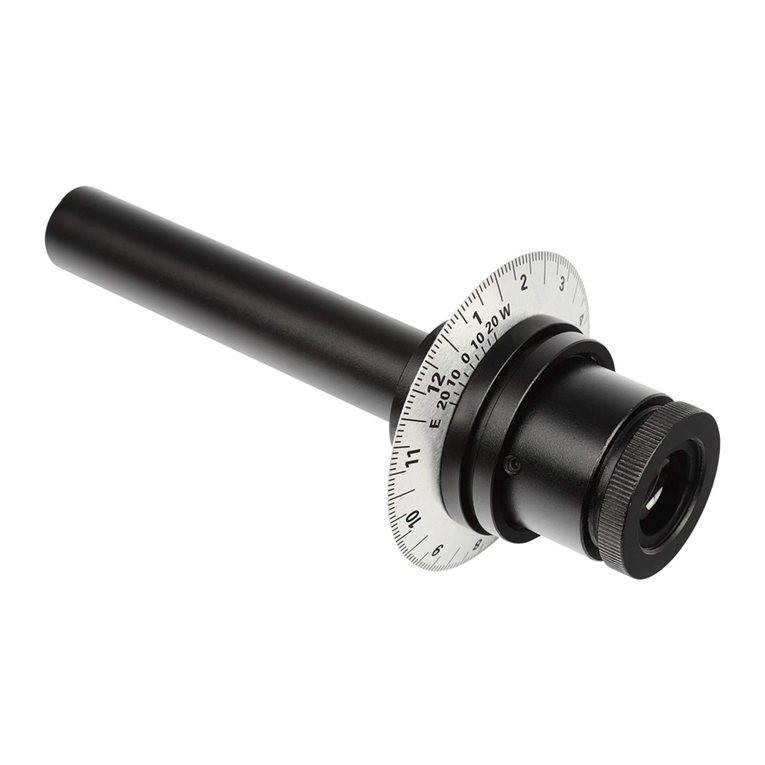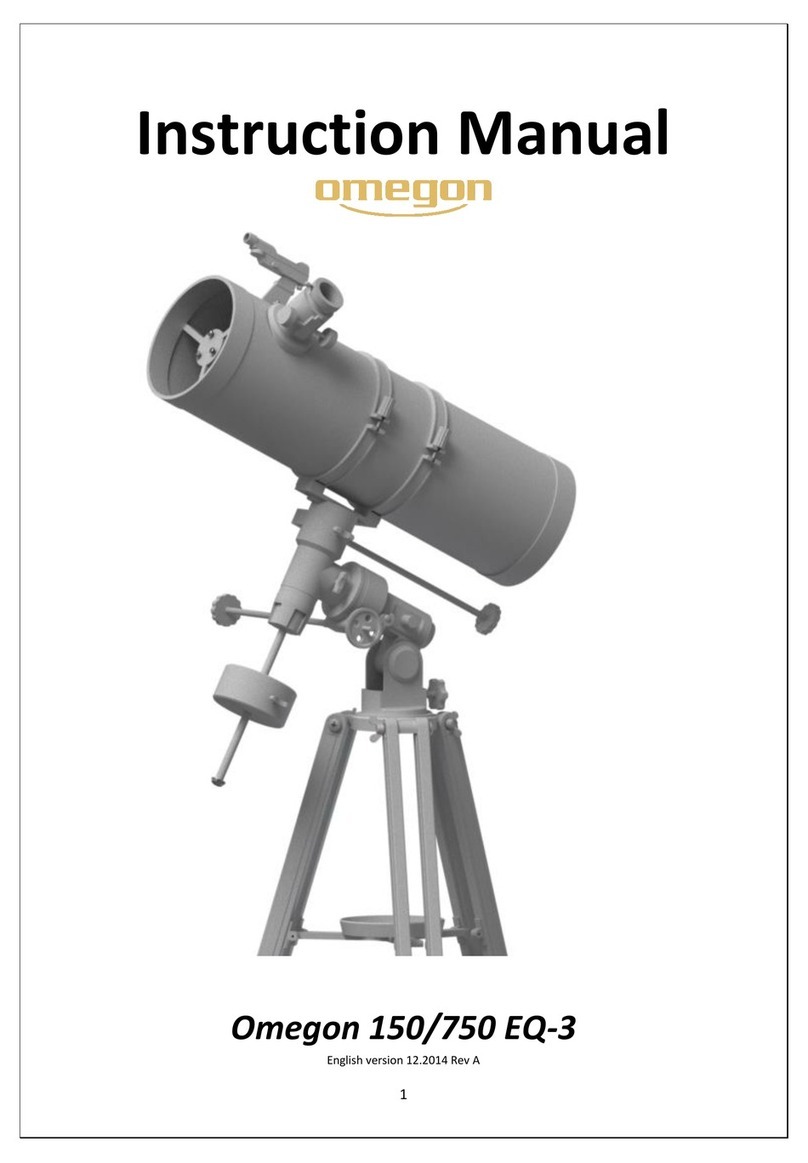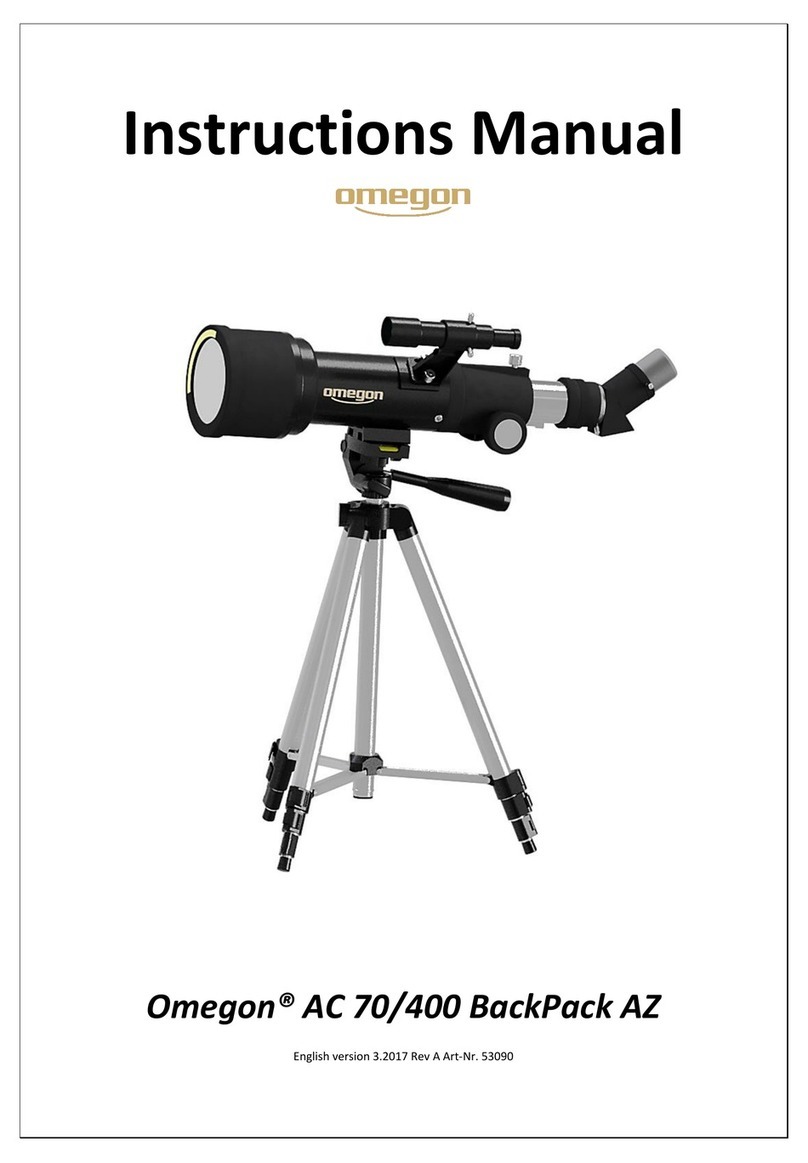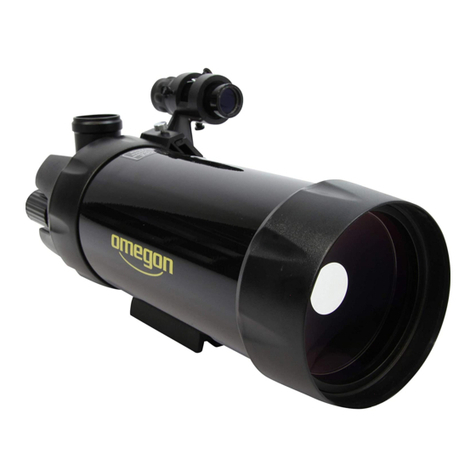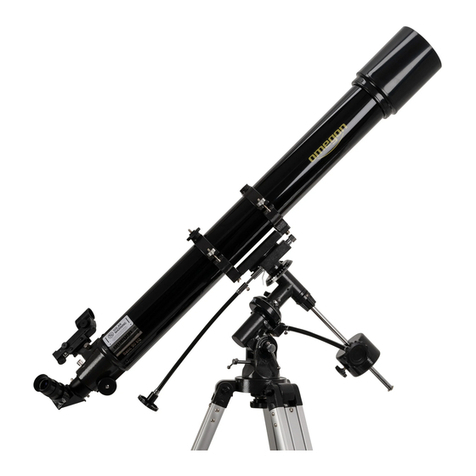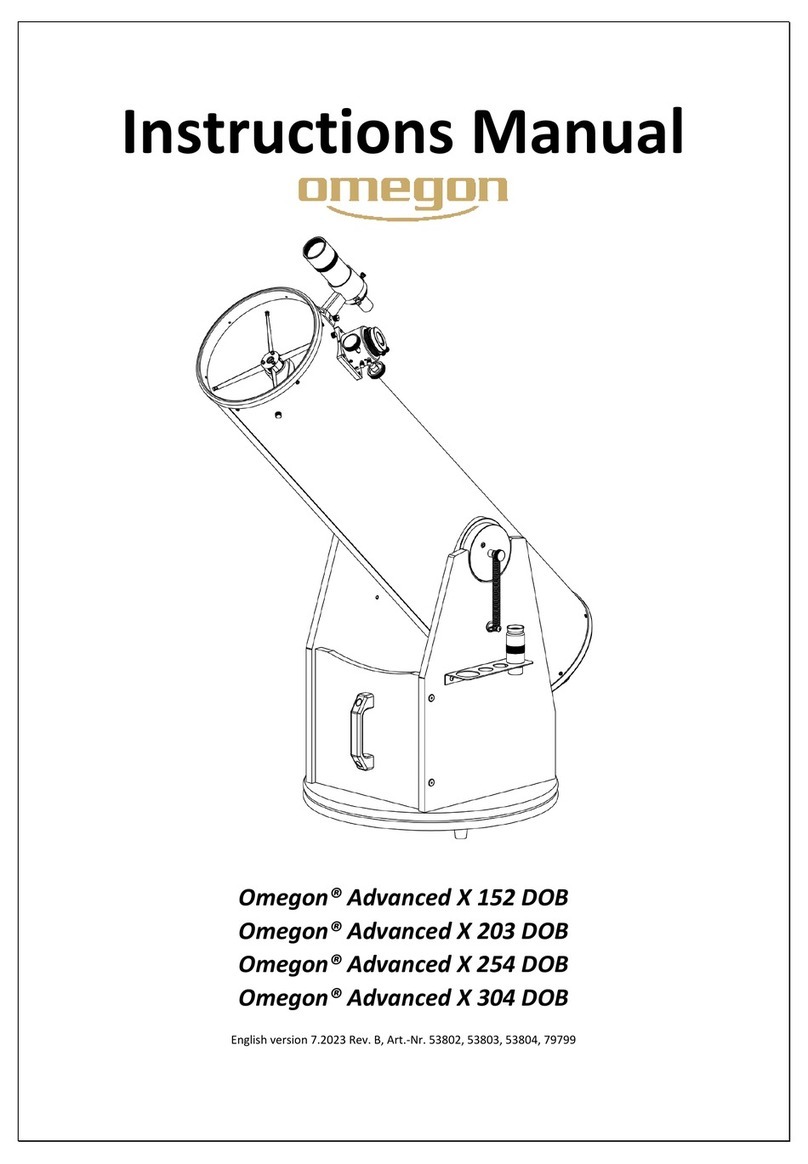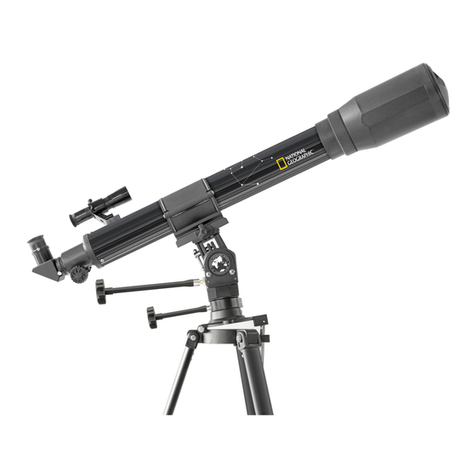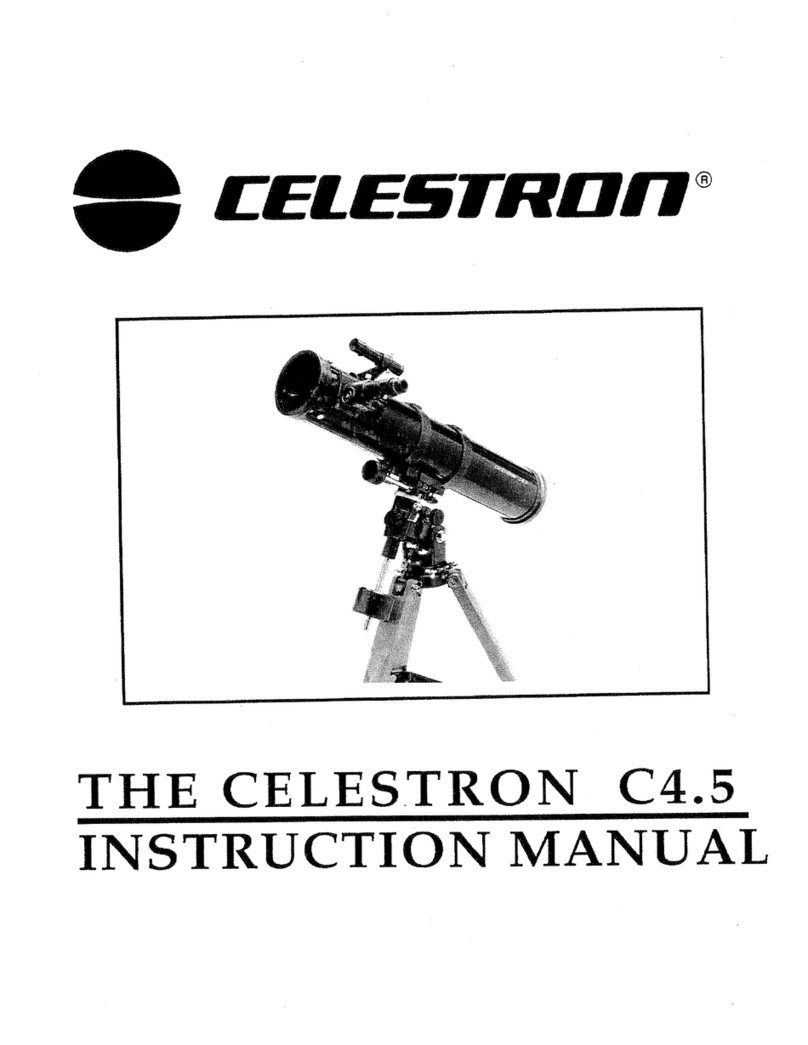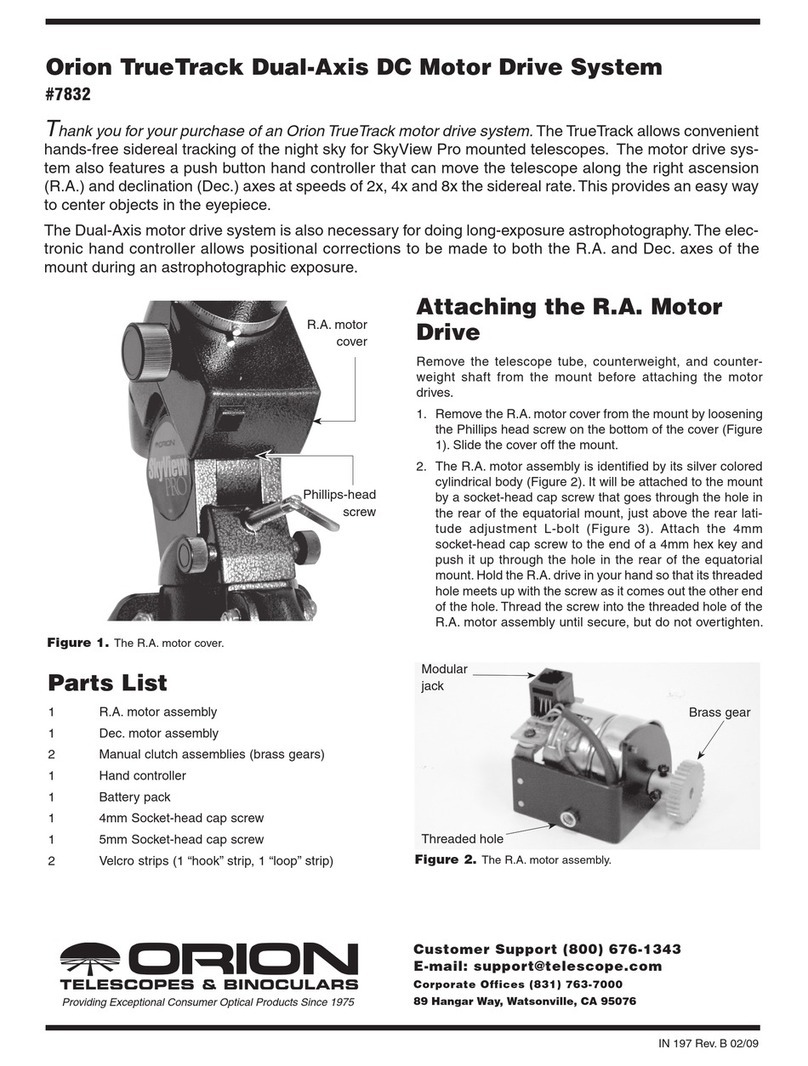Reproduction of part or all of the contents of this document in any form is expressly prohibited other than for individual use only. All text, images and labels are property of nimax Gmbh.
5. Using the accessories, a bit of math to
understand how all it works.
Using the accessories is easy and fun. To
change magnification simple swap eyepieces.
To get more magnification simply use the
barlow lens. But how all of this work?
5.1. Power (magnification)
Your telescope as a focal length of 700mm.
This is approximately the distance between
the telescope lens to its focal point (very
similar to the distance between the focus
point of a loupe and the loupe lens). This is a
very important feature that allows to
determine several interesting facts such as
magnification.
The magnification is determined by the
telescopes focal length and the used
eyepiece. You probably noticed that the two
supplied eyepieces are 20mm and 10mm. This
means that the 20mm is a 20mm focal length
eyepiece while the 10mm is a 10mm focal
length eyepiece.
To determine the magnification just devide
the telescope’s focal length by the eyepiece’s
focal length. Lets give an example for our
telescope and the supplied eyepieces:
Telescope focal length is 700mm
20mm eyepiece focal length is 20 mm
700𝑚𝑚
20𝑚𝑚 =35 𝑝𝑜𝑤𝑒𝑟
This means that the 20 eyepiece provides a
35x power (magnification). This seems low but
try it, you will see a a bright image with some
very good detail.
5.2. Barlow Lens
The barlow lens is a very interesting device. It
is a negative lens that multiplies the
telescopes focal length. So a 2x Barlow
multiplies the original focal length by 2x, in
this case 700𝑚𝑚 𝑥 2 = 1400𝑚𝑚.
A 3x Barlow lens multiplies by 3x.
Your telescope is supplied with a 2x Barlow
lens. When used with the 20 eyepiece you get
2x the power obtained before
35𝑝𝑜𝑤𝑒𝑟 𝑋 2𝑥 𝐵𝑎𝑟𝑙𝑜𝑤 = 70 𝑝𝑜𝑤𝑒𝑟.
the barlow lens is sandwiched between the
eyepiece and the focuser.
5.3. Erecting lens (not included)
The erecting lens provides an upright image
view with the telescope. It also adds some
power like the barlow lens.
5.4. Diagonal Mirror
This diverts the light coming from the
telescope to an angle of 90 degrees. It is
useful because it provides a more confortable
position when observing.
Here are some examples on how to use the
accessories.
Some possible accessory combinations


